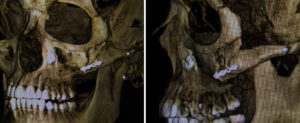
One of the main risks of cheekbone reduction is sagging of the attached soft tissues. This can be avoided by how the osteotomy is done and with good bone fixation. But in older patients who are already predisposed to loose cheek tissues this risk becomes magnified. It has been suggested that the risk cheek sagging can be prevented by combining a facelift procedure with cheekbone reduction in older patients. This can help create an oval and youthful midface.
In the August 2016 issue of the Annals of Plastic Surgery an article was published entitled ‘Reduction Malarplasty With Face-Lift for Older Asians With Prominent Zygoma’. In this clinical series over 20 older Asian women had a combined cheekbone reduction facelift procedures for their prominent zygomas and aging faces. The cheekbone reduction was done using an L-shaped osteotomy pattern. The facelift was performed in a usual fashion. All of the patients recover successfully with any major complications. The prominence of the cheekbone and sagging midface tissues were improved and the natural midface contour was preserved. Near one hundred percent satisfaction with the improved midface shape as well as rejuvenation of midface was achieved.
The most important aspect of this paper to me is that the performance of a facial skeletal osteotomy and a soft tissue suspension does not work against each other. In other words, the swelling from the cheekbone reduction does not stretch out the facelift result. This would have been my concern and it is good to read that this does not appear to occur.
There was no doubt that the facelift would provide a protective function against any cheek sagging. This is a useful combination of facial procedures to restore the youthful and proportionate facial relationships in older Asian patients. Or for any cheekbone reduction procedure done in an older patient regardless of their ethnicity.
Dr. Barry Eppley
Indianapolis, Indiana


